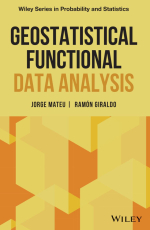Добрый день, Коллеги. Важное сообщение, просьба принять участие. Музей Ферсмана ищет помощь для реставрационных работ в помещении. Подробности по ссылке
Geostatistical functional data analysis / Геостатистический функциональный анализ данных
Spatial statistics has developed rapidly during the last 30 years. We have seen an interesting progress both in theoretical developments and in practical studies. Some early applications were in mining, forestry, and hydrology. It seems to be honest to remark that the increasing availability of computer power and skillful computer software has stimulated the ability to solve increasingly complex problems. Clearly, these problems have some common elements: they were all of a spatial nature. Some theory was available, for example the random function theory as developed by Yaglom and others in the 1960s. But that was largely insufficient to find generic solutions for the whole class of problems, and hence, the applications required a new theory. Thereupon some far-reaching theories have been developed: image reconstruction, Markov random fields, point process statistics, geostatistics, and random sets, to mention just a few. As a next stage, these theories were applied successfully to new disciplinary problems leading to modifications and extensions of mathematical and statistical procedures. We therefore notice a general scientific process that has occurred in the field of spatial statistics: well-defined problems with a common character were suddenly on the agenda, and data availability and intensive discussion with practical and disciplinary researchers resulted in new theoretical developments. Often, it is difficult to say which was first, and what followed, but we see different theoretical models developed for different applications. <...>




